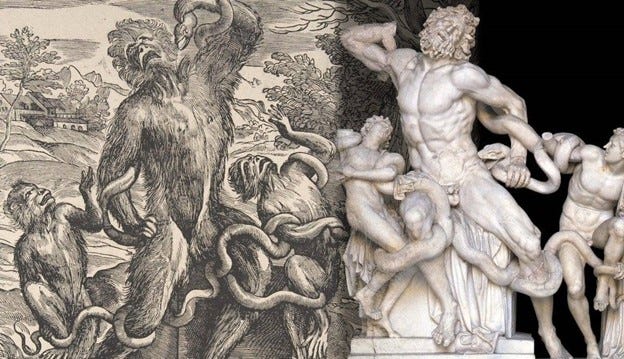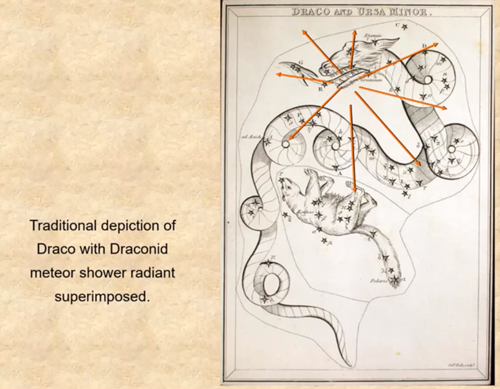They live among us
Have you ever been on a parasite cleanse? A friend was describing to me a recent one she had been on and how she could see the little worms that passed in her stool.
It may behoove us all to fight off worms. Toxoplasma gondii is a parasitical worm that in humans is known to cause severe erratic neurological behavior (toxoplasmosis) and has been linked to schizophrenia and bipolar disorder.
The most common manner of transmission is from cat feces, where the parasite’s eggs can be found. This gives new credence to the black cat as a bad omen, its ties to witchcraft, and the trope of the crazy cat lady.
The prevalence of Toxoplasmosis is astounding. By some estimates it has infected nearly 50% of the human population. A study done in Ethiopia found over 64% of pregnant women infected (the worm can pass from mother to child in utero). In many ways this little worm is the scourge of mankind.
An ancient battle
Our word worm comes from Old English/Germanic wyrm and Old Norse ormr which also meant snake, serpent, or dragon. Beowulf’s final battle is against a wyrm (serpent or dragon), taking place in the beast’s lair and at the expense of his life. Norse mythology states that the final battle of Earth, Ragnarök, will take place when the ormr trapped in an ouroboros girding the planet releases its tail.
The motif of hero or God battling a wyrm/serpent is prevalent throughout all Indo-European cultures. Indra, Trita, Zeus, Apollo, Hercules, Pereus, Thor, Beowulf, St. George, etc. all slay these monsters in tales hundreds if not thousands of miles and years apart. Calvert Watkins traces out this lineage in How to Kill a Dragon: Aspects of Indo-European Poetics.
Often these heroes or Gods were seen as the pillars of order and civilization and their nemeses as representations of swirling chthonic chaos, death, and destruction. Serpents have been mythologically connected many times to death and worms naturally are linked to decay. Pre-Socratic philosopher, Parmenides taught that the hiss of a snake was the sound one heard when approaching the underworld.
Perhaps the worm/serpent-slayer myth stands as just a metaphor for the perilous pinnacle that civilization exists in. Perhaps it is a retelling of some true primordial battle of epic proportions between man and serpents (reptilians?). Or perhaps it speaks of an event even more impactful…
The serpent that sunk Atlantis
The Indo-Europeans who held this myth were a multifaceted group of prehistoric conquerors, originally based in the Pontic steppe (modern day Romania, Ukraine & Russia). They were pastoralists and nomads and (as their name implies) in various waves they conquered the peoples of Europe and Western Asia.
Their languages, mythologies, and cultural practices trickled down amongst the far-ranging cultures that flowered out of their dispersion: Vedic, Iranian, Greek, Roman, Celtic, Slavic, etc.
Graham Hancock, Randall Carlson, John Anthony West, and many others propose that there was an ancient, advanced civilization tens-of-thousands of years ago. Apart from the abundant archeological evidence of prehistoric advanced civilizations (The Sphynx, Göbekli Tepe, Baalbek, etc.). Many myths and tales, including the tales of Atlantis that we get from Plato, point to its existence.
Now the connections between prehistoric advanced civilizations and the Proto-Indo-Europeans are somewhat tenuous. However, if you have a highly developed civilization in prehistory your best bet for some of their knowledge or tales living-on would be in a different or at least later set of conquerors who also existed in prehistory.
Now, what caused this Atlantean society to disappear? Most likely a cataclysmic flood (geologists call it Meltwater pulse 1B) – recall that flood myths are preeminent across ancient societies worldwide. The most convincing argument for the cause of this flood was a comet striking the glacial caps during the last ice age. What did the ancients across societies believe that comets were? Dragons or sky serpents. Indeed, there are even myths to substantiate that the world-changing comet above came from the Draconid constellation.
So you have the comet as the cause of the end of an ancient advanced civilization, and you also have a common-metaphor for comets, the dragon or serpent, represented in Indo-European myths handed down from prehistory as battling civilization and representing chaos. Coincidence? I think not. You’re likely saying to yourself “So an ancient sky serpent struck and earth and caused the sinking of Atlantis (**Yawn**) so what? It’s not like we believe in any of this today.” But you’d be wrong…
Biblical Ophidiophobia
The mythic serpent that Zeus fought was Typhon, who the God slayed to gain supremacy of the cosmos and whose body was then cast into the underworld, or buried in Sicily.
Typhon was equated in the Egyptian pantheon with Set, the God of chaos and storms. Set was the enemy of Osiris and Horus, they were the gods of the Son and light, he was the God of Darkness.
In the Osiris/Horus myth – Osiris is killed and then reborn through his son Horus conceived out of a miraculous conception with Isis. The Osiris/Horus myth still lives on in many tales including Hamlet and the Lion King – but perhaps its most salient impact was as a prefigure for Christ. And his enemy Typhon A.K.A. Set came down to us as the enemy, Satan. Our ophidiophobia (fear of snakes) makes its way even into our religions of today
Worm worship
Curiously enough prior to being the God of chaos, Set-Typhon was known as the God of the desert and foreigners.
I stated in a previous post about how the early Jews were possibly an offshoot cult of Egyptians – the God they worshiped was none other than Set. Plutarch states that Set-Typhon fled Egypt on the back of an ass, before arriving in the Middle East and fathering his two sons Hierosolymus and Judaeus.
Russell Gmirkin’s work on the origins of the Torah has an entire appendix discussing early Jews and their alleged belief in Typhon. Gmirkin does much to dispel the belief as antisemitic propaganda but this belief was prevalent across the ancient Hellenistic world. Per Wikipedia:
The gift and the curse
But perhaps worms are not all bad. The mythical double of Typhon was Python, a legendary serpent who Apollo slayed. But even though Python was slayed, he was seen as sacred to Apollo, so much so that Apollo buried Python in his shrine at the center of the world, the Omphalos of Delphi.
Delphi was perhaps the most important temple and priesthoods in the Greek world. Legend told that the fumes let off from the rotting body of Python gave the priestess there (called the Pythia) the ability to foresee the future. And the word of the Pythia, or Oracle of Delphi, was forever believed to be true and continued to be sought-out through the late 4th century AD.
In another myth Apollo gifted his son Asclepius, the Greek God of healing a rod entwined with the body of a snake. And this symbol has been passed down to us as a sign of medicine and health. The original Hippocratic Oath began with “"I swear by Apollo the Healer and by Asclepius…”
So worms are either the eternal bane of man or our hope for foresight and health. I guess like most things in life, it is what you make out of it. I hope you have enjoyed this venture down the wormhole, I leave you with this short vid as summary:








